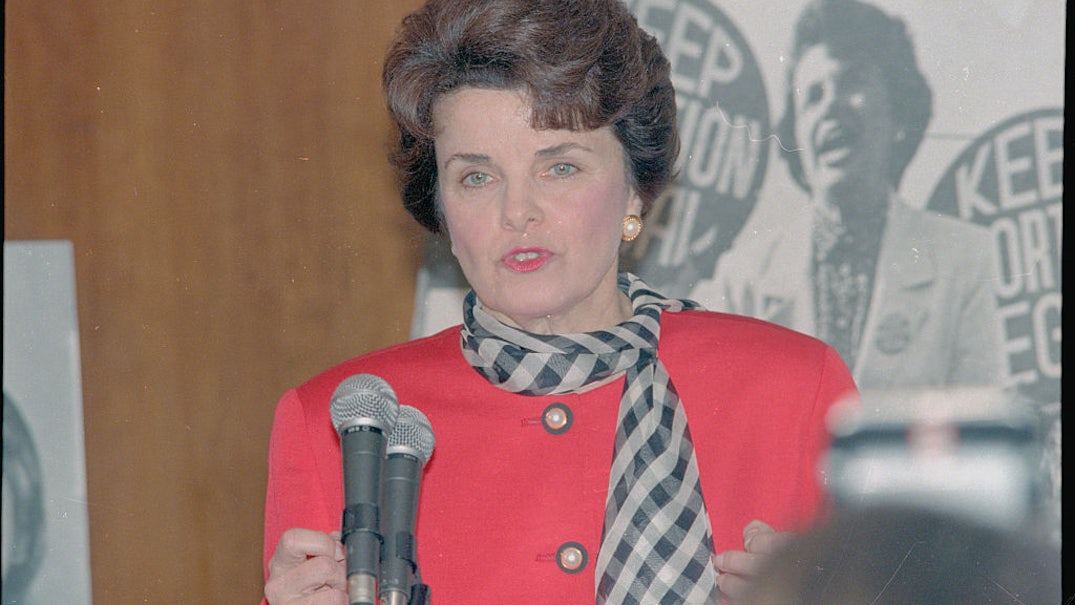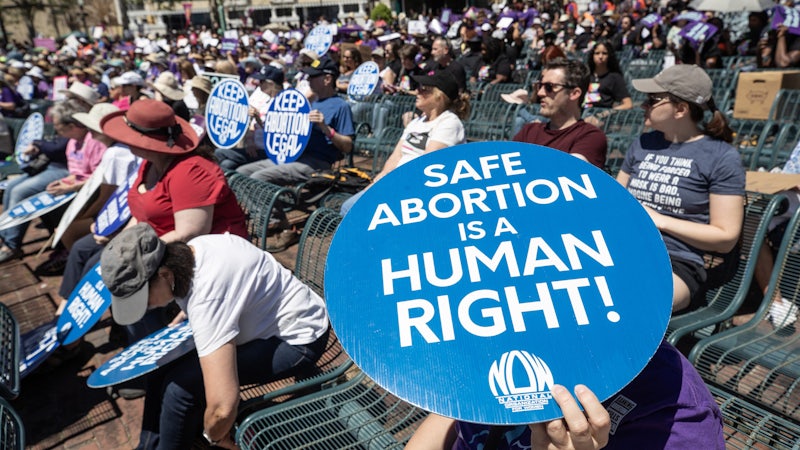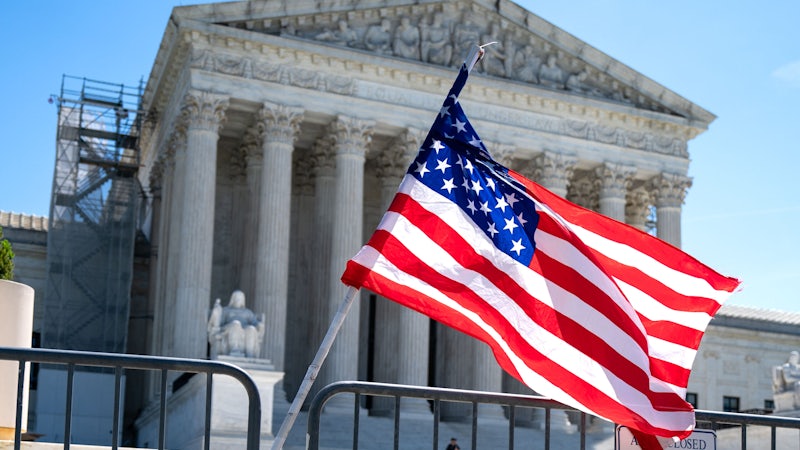Senator Dianne Feinstein’s death last week has triggered a slew of reminiscences of her legendary career, from her tragedy-tinged 1970s tenure on San Francisco’s Board of Supervisors, to her lengthy 1980s turn as the city’s Mayor, to her 30 years in the U.S. Senate. In 1989, three years before her Senate election, Feinstein delivered an urgent and passionate pro-choice address during a rally on the National Mall – a speech that has gained new poignancy given the fragile state of abortion access across the nation today.
In her final years in office, Senator Feinstein made waves several times for her attempts to protect the right to choose. She grilled now-Supreme Court Justices Gorsuch, Kavanaugh, Barrett, and Jackson about the precedent of Roe v. Wade during their respective confirmation hearings, called the eventual June 2022 overturn “an outrage for the women of this nation,” and supported a carve-out to the Senate filibuster in order to codify abortion rights despite the Court’s rollback.
I took to C-SPAN’s video archives to trace some of Feinstein’s earlier actions in support of women’s rights, and found an almost 5-hour video of the November 12th, 1989 Mobilize to Protect Women’s Lives rally – a riveting document of a moment of particular intensity in a decades-long battle for reproductive freedom.
The National Organization for Women (NOW) held two major actions in Washington D.C. during 1989. The first, in April, saw between 300,000 and 600,000 activists take to the National Mall to protest President George H.W. Bush’s support for the overturning of Roe v. Wade.
Events over the course of Summer and early Fall of 1989 further galvanized pro-choice activists. First, in July, the Supreme Court ruled in Webster v. Reproductive Health Services that individual states that denied resources for facilities that performed or gave advice on abortions were within their constitutional rights – a weakening of the understood protections of Roe.
The Webster case emerged out of a particularly aggressive state law passed by a GOP-dominated Missouri legislature that defined life as beginning at conception, and the statute had been successfully defended before the Court by the fiercely right-wing Missouri Attorney General, William Webster.
Then, in October, President Bush vetoed two bills related to abortion access. One would have allowed federal funds nationally to pay for abortions for impoverished women who were victims of rape or incest. The other was the 1990 Washington D.C. budget, which had included provisions for the use of local tax dollars to fund abortions for the District’s poor. Bush’s willingness to veto the entire budget due to the abortion stipulations held up appropriations for D.C. and signaled how far Bush would go to oppose reproductive rights.
In the immediate aftermath of Bush’s vetoes, NOW President Molly Yard announced a mass mobilization for the following week. NOW would coordinate 1,000 abortion-rights events held in more than 150 cities and towns, spearheaded by a series of speeches and performances at the Lincoln Memorial. The “Mobilize to Protect Women’s Lives” action was set. Protesters held a sunrise vigil near President Bush’s vacation home in Kennebunkport, Maine. A gospel revival event in New Orleans drew 15,000 pro-choice advocates. And masses flooded to Washington for the main event.
On Sunday, November 12th, up to 300,000 people thronged the Mall. The D.C. event was tinged with defiant music – pop star Helen Reddy performed her iconic 1970s feminist anthem “I Am Woman.” Legendary folk singers Pete Seeger and Ronnie Gilbert performed “This Land is Your Land.”
The rally also saw pro-choice speeches from powerful politicians, including Senate Majority Leader Alan Cranston and New York City Mayor-elect David Dinkins.
And then there was Dianne Feinstein. After serving as San Francisco’s Mayor from 1978 to 1988, Feinstein had declared her candidacy for the California governorship. Unlike departing Republican Governor George Deukmejian or his heir apparent Pete Wilson, Feinstein had long been an advocate for reproductive freedom.
In her speech at the NOW rally, Feinstein began by recounting the long fight for female representation in government and the workplace. She then maligned the rollback in rights punctuated by the Bush administration’s and the Supreme Court’s rolling back of Roe:
One fight that we believed we had won was the right to personal privacy and personal belief in the control of our bodies in certain critical circumstances. We believed that politics did not have a place in the most intimate part of a woman’s life and in Roe v. Wade, we found sanctuary.
Feinstein nodded to the Webster decision and the dangers of allowing male-dominated anti-abortion state legislatures to dictate access in their states:
We now find that what has been an inalienable right adjudicated by the highest court in the land is thrown open to the political vagaries of state legislatures, all controlled by men. We find that there are those in their belief who would prevent others from a different one. We find that there are those who say that if a 13-year-old girl is raped she must bear that child, regardless of her health or ability to care for herself or that child. And we find that one religion is prepared to dictate to another.
After surveying the concerning post-Webster landscape, Feinstein took a more hopeful tone. She cited the victory five days earlier of Black Democratic Virginia Governor-elect Douglas Wilder, who had made his opposition to the Webster decision a centerpiece of his campaign, even releasing ads suggesting that his GOP opponent was trying to “take away your right to choose and give it to politicians.” Feinstein also highlighted the concurrent victory of New Jersey Democratic gubernatorial candidate Jim Florio, who had taken a similarly critical tack in his race against his anti-abortion Republican challenger:
This week, the power of our case was tested in Virginia, in New Jersey, and we sent doubters a message: “Keep your hands off our right to choose.” And we proved that we can and will unite to protect this right, and we will elect those who stand with us. And if there are those who doubt, we will send them a message in 1990.
Feinstein then argued that women gubernatorial candidates who had announced for 1990 races – herself included – would continue the fight to protect reproductive rights in the states:
And I believe we must elect women, for–after all–we can best plead our case. And so I say, let’s send them a message and elect Ann Richards in Texas, Evelyn Murphy in Massachusetts, Jo Ann Zimmerman in Iowa, Madeleine Kunin in Vermont, and Dianne Feinstein in California.
Of Feinstein’s list, only Ann Richards in Texas would take the governorship in 1990. But California voters would elect Feinstein to the Senate two years later, amid a groundswell of support for female politicians that saw four other women elected to the Senate and led to 1992 being dubbed “The Year of the Woman.”
Feinstein ended her 1989 address with a call to action that sounds all-too-fresh amid the current GOP-led crusade against women’s reproductive freedoms:
We need leaders who will never equivocate on this critical issue. We need leaders who will veto any and all legislation that tries to outlaw abortion. We need leaders who will veto thinly-veiled attempts by our opponents to whittle away at the availability of legal abortion. And we need leaders who will fight every attempt to cut off funds for poor women to obtain legal, safe abortions.
Webster and Bush’s vetoes were obviously not as serious of a threat to abortion access as the overturn of Roe, but there are signs that the pushback that animated Feinstein’s speech 34 years ago is again coming to the fore.
Twenty states have enacted shield laws protecting abortion access since Roe’s reversal. Just as Virginia and New Jersey’s gubernatorial races signaled a rejection of Republican anti-abortion talking points in 1989, so too did August’s “Issue One” ballot initiative in Ohio, in which state Republicans were voted down in their designs to sabotage efforts for abortion protections. And a new generation of women politicians are fighting for rights – the current 118th Congress has a record 153 women members, while four female governors have taken office in the last year.
Feinstein’s fiery address – just one early example of her many pro-choice oratories over her career – offers a game plan of representation, pressure, and defiance necessary to protect abortion rights. And Feinstein’s clear-eyed message offers yet another reminder in a week full of them of why her trailblazing career mattered so much.
For more on Dianne Feinstein’s legacy, read our Vox Media colleague Rebecca Traister’s recent profile in New York Magazine, “The Institutionalist.”
And head to the Twitter account of Now & Then Editorial Producer David Kurlander for supplemental archival threads on each Time Machine piece: @DavidKurlander.
To receive Time Machine articles in your inbox, sign up to receive the CAFE Brief newsletter sent every Friday.
Catch up on some recent Time Machine deep dives into history:




























